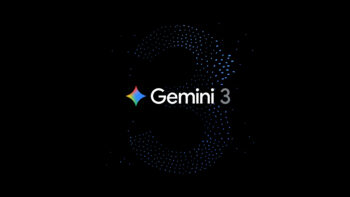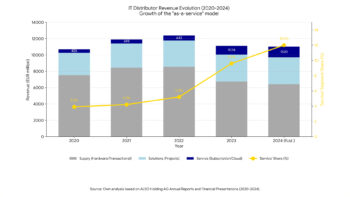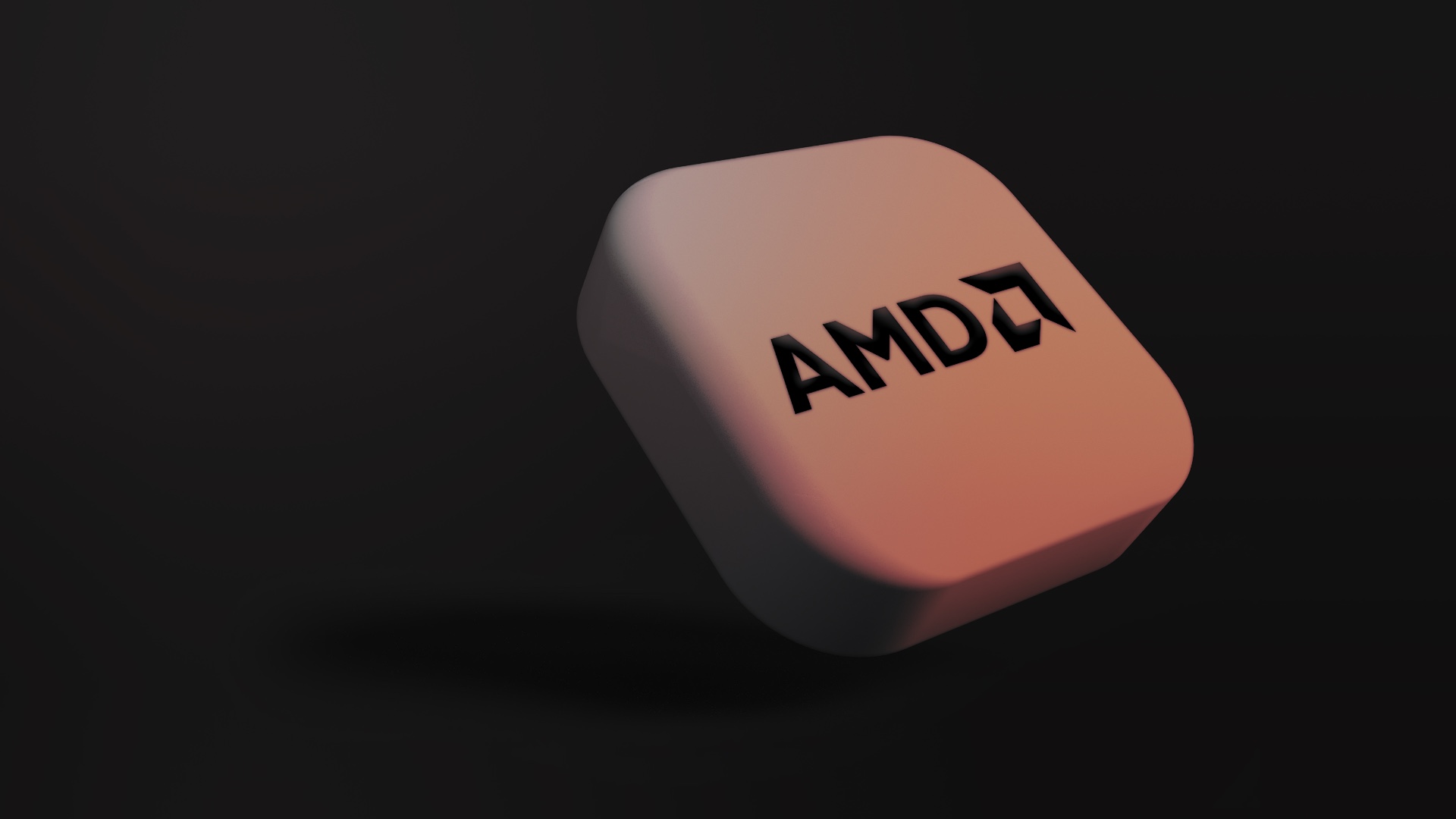As energy prices rise and AI pushes into server racks, energy efficiency is no longer a technical detail. It is becoming the language of customer conversations, a measure of competitive advantage and the foundation of modern data centres. At a technology breakfast held on 8 May 2025 at the Atman DC WAW-1 campus, experts from AMD, Lenovo and Atman showed that saving electricity in a data centre starts much earlier than at the meter – from processor design to component selection to the architecture of the entire facility. The meeting was not only an opportunity to see one of the largest data centres in Poland up close, but above all a practical lesson in energy efficiency.
Energy under control: why the topic is urgent
When electricity costs start to determine the profitability of a data centre, energy efficiency ceases to be an add-on – it becomes the foundation of strategy. During a technology breakfast at Atman’s Warsaw campus, representatives from three companies: Atman, Lenovo and AMD, unanimously stressed that today every watt of electricity must be justified.
“Energy efficiency is becoming a competitive advantage – no longer just at the PUE level, but primarily from the business perspective of customers who are looking at the TCO of the overall infrastructure. For them today it is a hard cost, not a soft ESG statement,” – said Adam Dzielnicki, Product Manager Data Centre, Atman.

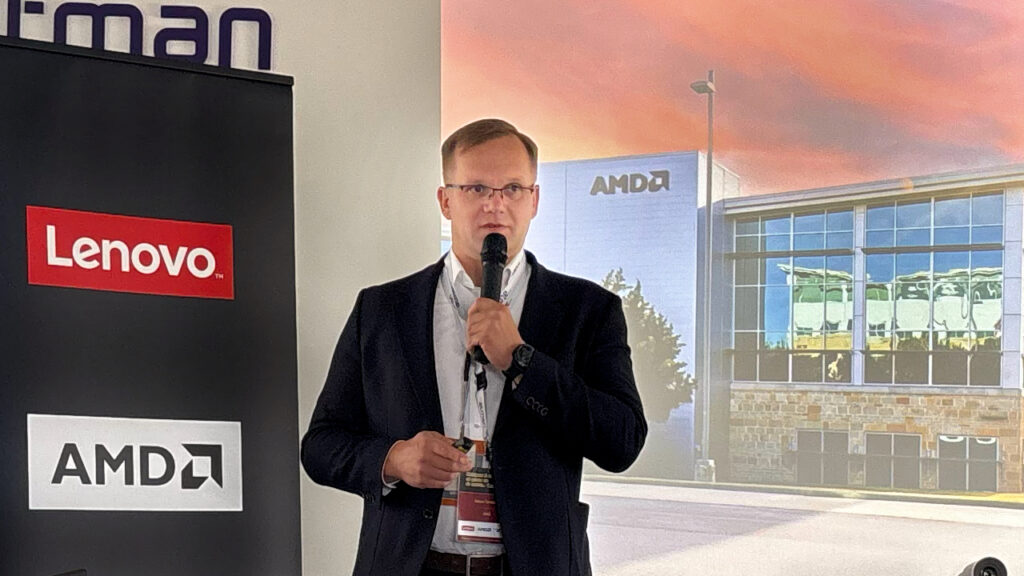

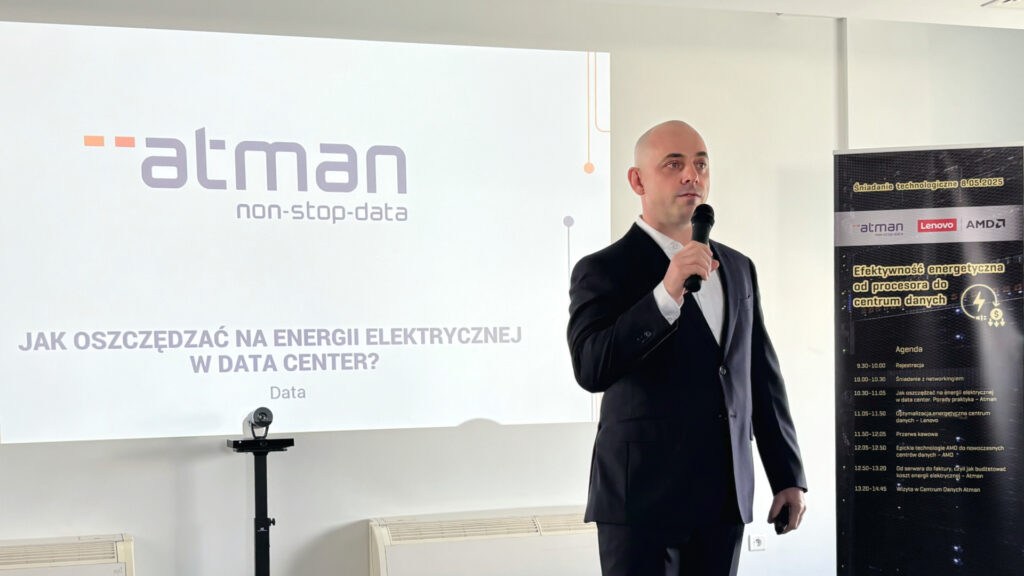
Pressure is mounting from several directions. Firstly, financially. The rise in electricity prices in Poland and Europe means that companies are increasingly beginning to question the justification for keeping obsolete equipment, even if it technically still works. Secondly – regulatory. The European Commission has already announced the introduction of mandatory energy efficiency reporting for large data centres, and member states are preparing to implement local regulations.
“Customers today are asking not only about power, but also how many servers will need to be powered and what cooling infrastructure to use for this. This is a completely new approach to IT planning – it is more like an energy project than a hardware purchase,” – noted Łukasz Borkowski, Technical Channel Country Sales BI & Infrastructure.
Added to this is a third factor – pressure from end customers. More and more organisations are measuring their own carbon footprint and expecting their IT service providers to do the same. “It’s not just about KPIs in Excel anymore. It happens that customers demand declarations of the carbon footprint of the infrastructure on which their application runs.” – Dzielnicki added.
In such an environment, the conversation about efficiency descends to the micro level – from cooling technology to SSD selection to processor architecture. Every component is a potential source of gain… or loss. As experts have pointed out, even a difference of 10 watts per SSD module – multiplied by hundreds of machines – can translate into thousands of zlotys per year at the scale of the data centre.
AMD: more cores, less power
Just a decade ago, AMD was regarded as an outsider in the server market – today it has a 35% global share in the Data Centre (according to Mercury Research), supplies processors to the largest hyperscalers and argues that performance and energy efficiency need not be mutually exclusive. “Today, AMD’s valuation is significantly higher than our largest competitor in the x86 space. In the first quarter of this year, AMD’s Data Centre segment grew by as much as 57% year-on-year.” – Adam Tomczak, Territory Development Executive CEE at AMD, said at the meeting.
Designed from the ground up with servers in mind, AMD’s EPYC architecture has increased the number of cores in each generation, which, among other things, translates into power packing density and increased energy efficiency. The result? “Since 2017, we’ve had a six-fold increase in the number of cores, an almost eleven-fold increase in performance and a four-fold increase in performance per watt. This is not just marketing – this is hard benchmark data, ” Tomczak added.
Another differentiator for AMD is also its offering on single-processor platforms, which allows it to build cheaper and more energy-efficient configurations without compromising on performance. “By using single-processor platforms instead of two, customers can significantly reduce TCO – they use less power, cool fewer racks and have fewer points of failure, without compromising performance, ” Tomczak explained.
AMD technical expert Krzysztof Łuka went even further: “Compared to Intel processors today, we have up to twice the SPECpower metric, i.e. computing performance with specific power consumption. And at the same time, we can achieve up to 384 cores on a single machine.”
What does this mean for companies? Fewer servers, fewer licences, less energy – and therefore less CO₂ emissions. AMD does not offer the cheapest chips, but in terms of total infrastructure costs it often proves unbeatable.
Lenovo: less hardware, more performance
At a time when a single server can consume up to 10 kilowatts of power, the question of performance is inextricably linked to the question of power consumption. For Lenovo, the key turns out to be optimising the entire hardware ecosystem – from motherboard design to NVMe drive selection. “What sets Lenovo apart is that we use theoretically the same components as others – but our own cooling systems and proprietary motherboard designs allow us to get much more out of them.” – said Lukasz Borkowski, Technical Channel Sales at Lenovo.
During the meeting, Borkowski did not spare specifics. As he calculated, two NVMe drives with similar parameters can differ in power consumption by up to 10 watts – and with dozens of servers with a dozen drives each, this adds up to hundreds of watts of possible savings. “You can save more than half a kilowatt on the drives alone. And that’s just the beginning.”
Lenovo not only focuses on components, but also on cooling systems. The company has been developing water-based cooling systems for years – today even available in standard rack servers. “With the sixth generation of our Liquid-to-Air system, we are able to reduce cooling energy consumption by up to 30 per cent by eliminating fans in power supplies as well.” – Borkowski emphasised.
In parallel, Lenovo is promoting a consolidation approach – fewer servers, but more powerful. “With today’s processors, we can achieve a 5-to-1 ratio – that is, replacing five older servers with one new one. In practice, after about 16 months we start to make money from this upgrade.” – Borkowski said, encouraging people to ditch inefficient hardware.
Lenovo claims that benchmarks confirm six times higher performance records than its competitors. With per-core licence and energy costs rising, this means tangible savings – not only on hardware, but also on software.
Atman: what the PUE looks like from the inside
The increase in demand for computing power not only means more servers, but also more energy and heat. And this translates directly into costs and infrastructure performance. “Energy efficiency is not just a technical topic today – it is a strategic issue.” – Adam Dzielnicki, product manager at Atman, said at the event.
As the operator of the largest data centre campus in Poland – Atman DC WAW-1 – the company is at the intersection of customer pressure, the regulator and its own optimisation. “Customers are increasingly asking about PUE and even carbon footprint. It’s not just CSR anymore – it’s a tender requirement.” – admitted Dzielnicki. And he added: “A PUE below 1.3 is no longer science fiction. But it requires decisions made much earlier – from the design stage to the selection of equipment.”
Atman is investing in energy monitoring at component and service level, allowing customers to accurately account for energy and control consumption. The presentation also highlighted the importance of working with infrastructure providers – such as Lenovo and AMD – to minimise power consumption at the CPU, GPU, cooling and whole rack level.
“There is no single recipe for efficiency. In our case, a layered approach is key: from the construction of the hall, to the HVAC systems, to the software load monitoring. It all affects the final PUE,” – explained Dzielnicki.
Atman is clearly committed to transparency and practice – attendees had the opportunity to see for themselves what the DC WAW-1 infrastructure looks like from the inside. It was apparent that energy optimisation has ceased to be a statement – and has become an integral part of the service architecture.
Energy efficiency as the new market standard
The discussion about energy efficiency is becoming less and less about slogans – and more and more about concrete data, indicators and investment decisions. As the event organised by Atman, Lenovo and AMD showed, technology and energy efficiency are not only not mutually exclusive, but are beginning to go hand in hand.
“In 2025, a server can consume 10 kW and its cooling another kilowatts. If we don’t optimise this infrastructure, the energy bill starts to crush the business.” – said Lenovo’s Lukasz Borkowski, pointing to the increasing share of cooling in total energy consumption.
AMD’s Adam Tomczak, on the other hand, reiterated that efficiency is not a question of subsidies or additional features. “We do not offer security as a paid add-on. Our Infinity Guard has been available since the first generation of EPYC – because that’s how we understand responsible technology.”
For operators such as Atman, subject matter is no longer just a matter of internal efficiency, but a measurable market advantage. “PUE is not a number for presentation – it is a metric that determines the competitiveness of an offering in the eyes of corporate customers.” – explained Adam Dzielnicki.
The event made it clear that the future of the IT infrastructure market in Poland will not be based solely on computing power. Equally important will be the ability to convert this power into watts, zlotys – and customer confidence. Because efficiency is not just a parameter today – it is the language in which industry leaders talk.








